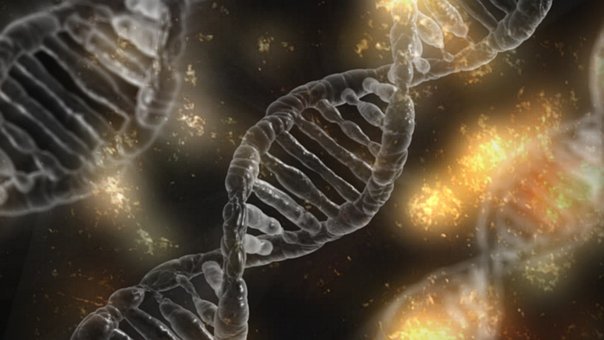Genetics' hottest topics from genetically modified foods to genetic testing are explained in Times science editor Mark Henderson's popular science book.
50 Genetic Ideas You Really Need to Know is the perfect crash course in genetics. The book condenses the key ideas of a field that has come to dominate so many of the scientific advances of the 21st century into a readable and engaging format. The informal narrative and insightful quotes dotted throughout the book make it an entertaining read for both novices and experts of the field.

The roles genes play in race, intelligence, and sex are each the subject of the one of 50 essays in the book. Helpful diagrams and fact boxes reinforce understanding of the main concepts covered. The book. therefore puts knowledge of the fundamentals of genetics within the grasp of all who read it.
The wider impact of genetics, such as the wealth of evidence it has provided to support the theory of evolution and its revolutionary effect on the work of forensics is discussed. The controversy generated by many advances, particularly in relation to medical research, is also debated in the book.
Genetic Pioneers
Henderson begins by outlining the conception of genetics as a scientific field. The work of genetic pioneers such as Austrian monk Gregor Mendel, hailed as the father of genetics, is the natural starting point used to introduce genetics fundamental theories. This lays the foundations for building a solid grasp of more complex genetic ideas discussed later.The work of scientists who made vital contributions to modern genetics is covered in just enough detail to keep the book’s page-turning pace going. Henderson explains Thomas Hunt Morgan’s proof that genes are carried on threads called chromosomes and George Beadle and Edward Tatum’s confirmation that genes make proteins.
Any book on genetics would be incomplete without mentioning the seminal work of Crick and Watson, who revealed the double-helical structure DNA. This book neatly explains the significance of their work and how it led to further discoveries about the relationship between DNA’s structure and its functions. Years later, the subsequent race to sequence the human genome led Bill Clinton to declare "We are learning the language in which God created life" (p. 51)
Nature Vs Nurture
By tackling the familiar nature-nurture debate, Henderson sheds light on the common misconception that individuals are merely the sum of their genes. A clear picture of the subtleties involved in the fine balance between nature and nurture is painted. Rather than being deterministic, he explains that genes interact with environmental factors to add to an individual’s uniqueness. For instance, genetically identical twins can develop biological differences through their exposure to various factors in the womb.
In relation to disease, Henderson explains how rather than there being a gene ‘for’ a particular disease, genes often only predispose an individual to a certain disease. Lifestyle choices play a vital role and more often than not, several genes are involved in determining an individual’s susceptibility to a given disease. For instance, the failure to yet identify a so-called autism gene, despite the condition’s heritability, is likely to indicate the involvement of several genes.
Genetic Diseases
When explaining the relationship between genes and disease, Henderson elucidates what Nobel Laureate Paul Berg meant when he said all disease is genetic to some extent. Subtle differences between people’s genetic profiles can affect their immune system’s ability to fight disease. In cancer, genetic errors have been shown to result in cells acquiring cancerous characteristics. Complex genetic interplay has been shown to be involved in conditions like Alzheimer’s.
An understanding of the role genes play in disease has provided new targets for research into drug development. In many cases genetic research has led to life-changing fertility treatments and stem cells look set to offer promising treatments for conditions like multiple sclerosis.
Ethics and Genetics
The book offers thought-provoking insights into the debates sparked by the rise of research into genetics. Genetics has generated some of science’s most attention grabbing headlines this century but these have often been marred with controversy. Wide-spread misgivings about genetically-modified (GM) foods led to a ban of all GM products in the UK, while recent work on stem cells has created a barrage of objections, mainly on ethical grounds, from many sectors of society, particularly religious groups.
Future Genetic Developments
To round off what is certainly a triumph for popular science writing, Henderson looks at what further advances genetics is likely to lead to, such as the development of bespoke drugs. Genetics promises to further facilitate our biological understanding, prompting scientists to re-think previous dogma. The previously laughable idea that acquired characteristics are heritable, has been overturned by the discovery of epigenetics. This involves tagging genes with molecules that enable characteristics acquired through environmental interactions by parents to be passed on to their offspring. While DNA’s previously side-lined sister molecule RNA is fast gaining ground as playing a key role in biology.
A look at the growing use of genes to trace one’s ancestry and the increasing availability of genetic testing to assess an individual’s susceptibility to certain medical conditions shows the full potential of genetics is yet to be realised.
Source: 50 Genetic Ideas You Really Need to Know. 2008. Mark Henderson, Quercus Publishing Plc ISBN - 978-1-84724-671-4